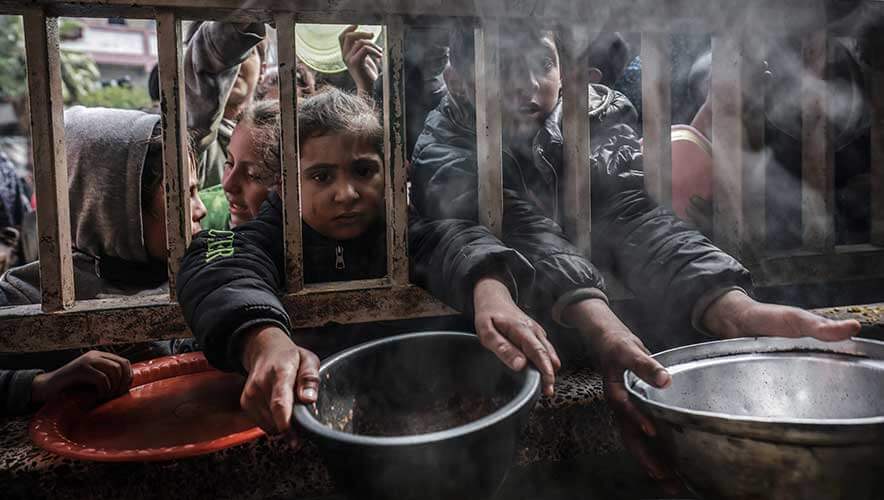Conflicts Sharply Exacerbated Food Shortages, Famine, and Starvation, UN Report Finds
Global conflicts have sharply exacerbated food shortages, famine, and starvation worldwide in the past year, according to an annual United Nations report.
The 2024 Global Report on Food Crises (GRFC) found that 281.6 million people faced high levels of acute food insecurity across 59 countries and territories in 2023. In five countries, 705,000 people are at the highest level of food insecurity and hunger—quadruple the level in 2016, when the report was first launched.
The GRFC defines a food crisis as “a situation where acute food insecurity requires urgent action to protect and save lives and livelihoods at local or national levels and exceeds the local resources and capacities to respond.”
Food insecurity arises, the report said, when availability, access, utilization, or stability are disrupted, either chronically (when food insecurity persists over time) or acutely. Food crises are more likely to happen among populations already suffering from prolonged food insecurity or malnutrition, where structural factors increase vulnerability to shocks.
The GRFC monitors countries that have been identified as being in food crisis in 2023; 14 food-crisis countries were not accounted for this year because they lacked data. Year-over-year, conditions worsened in 12 countries and improved in 17 countries. But where conditions got worse, they seriously declined, resulting in an additional 13.5 million people facing high levels of acute food insecurity. Sudan had the biggest deterioration year-over-year due to its ongoing civil war, with 20.3 million people facing acute food insecurity. In Haiti, nearly half of the country’s population face high levels of acute food insecurity.
Conflict was the primary driver of food insecurity, affecting 20 countries and 135 million people. War-torn Gaza is the territory with the highest number of people facing famine—577,000 people, the report said. In Sudan, a year-long civil war has driven massive internal displacement and food insecurity. By July 2024, around 1.1 million people in Gaza and 79,000 people in South Sudan are projected to be in the worst phase of food insecurity, facing famine.
The number of displaced people across the 59 food-crisis countries and territories studied in the GRFC reached more than 90 million in the past year—most of them are internally displaced (64 million) and the rest are refugees, asylum-seekers, and migrants.
“Available data paint a dire picture of acute food insecurity and malnutrition among displaced populations as they face specific vulnerabilities such as protection risks, limited access to employment, livelihoods, food, and shelter, and reliance on dwindling humanitarian assistance,” the report said. “Without concerted action among governments and the international community to meet funding requirements, the situation will likely continue to deteriorate in 2024.”
Weather extremes and economic shocks were the other two primary drivers of food insecurity worldwide, with either extreme drought or flooding making land unfarmable or high food prices crippling low-income, import-dependent countries.
Learn more about how conflict, extremism, food insecurity, and displacement overlap in these articles from Security Management:
- "Lasting Peace and Stability Require Engagement with Communities and Local Leaders"
- "Conflict, Climate, and COVID-19: Measuring Worldwide Hunger Hotspots"
- "UN Warns Ukraine Food Crisis is ‘Catastrophe on Top of a Catastrophe’"
- "Despite G7 Investment, Global Hunger Response Requires More Resources"












